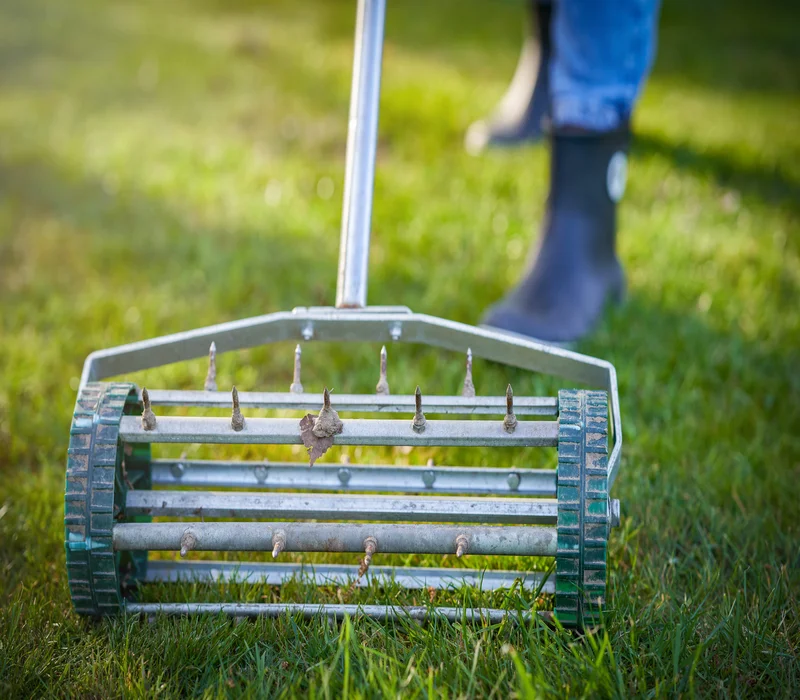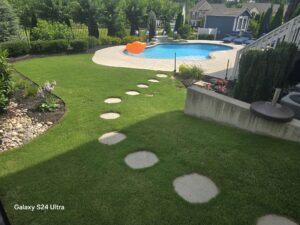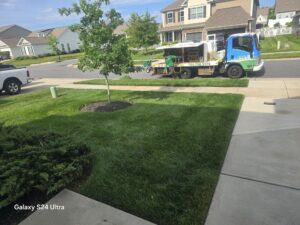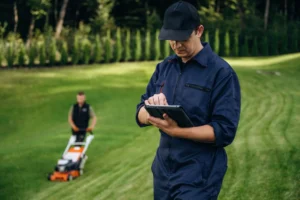If you’re looking to transform your lawn from lackluster to lush, understanding aeration and overseeding is essential. These two practices, while often overlooked, are crucial for maintaining a healthy and vibrant lawn. In this article, we’ll explore the magic of lawn aeration, the right tools you need, timing considerations, the importance of overseeding, and a step-by-step guide on how to do it. By the end, you’ll be equipped with the knowledge to revitalize your lawn and enhance its beauty.

Understanding the Magic of Lawn Aeration
Lawn aeration is a process that involves perforating the soil with holes to allow air, water, and nutrients to penetrate deep into the grassroots. This simple yet effective technique encourages healthy root growth, improves drainage, and boosts the overall health of the lawn.
- Improved Soil Compaction: Aeration helps relieve soil compaction, which is common in high-traffic areas and leads to poor grass growth.
- Enhanced Nutrient Uptake: By allowing air and nutrients to penetrate the soil more effectively, plants can absorb what they need to thrive.
- Better Drainage: Aeration prevents water pooling and promotes efficient drainage, keeping your lawn hydrated without over-saturating it.
- Promotes Root Development: Healthier roots mean a stronger and more resilient lawn that can better withstand drought and pests.
The Right Tools for Aeration: A Comprehensive Guide
Having the right tools for lawn aeration can make the process easier and more effective. Here are some of the most common tools:
- Core Aerator: This tool removes small plugs of soil and deposits them on the lawn surface. It’s the most effective tool for aeration and can be rented from garden centers.
- Spike Aerator: Unlike core aerators, spike aerators create holes in the lawn by simply poking them into the ground. They are less effective but can be a good option for smaller yards.
- Garden Fork or Spading Fork: For small areas or spot aeration, a garden fork can be used to manually aerate the soil by creating holes.
- Heavy Roller: After aerating, using a heavy roller can help compact the soil slightly, ensuring the grass settles in well.
Best Time to Aerate Your Lawn: Timing is Everything
Timing plays a crucial role in the effectiveness of aeration. The best times to aerate your lawn typically depend on your region and the type of grass you’re maintaining.
- Cool-Season Grasses: The ideal time to aerate cool-season grasses (like Kentucky bluegrass and fescue) is in the early spring or early fall when temperatures are moderate and growth is optimal.
- Warm-Season Grasses: For warm-season grasses (such as Bermuda and zoysia), late spring to early summer is the best time as they grow most vigorously during these months.
- Moist Conditions: Aim to aerate when your soil is moist but not soggy; this makes it easier to penetrate the soil.

The Importance of Overseeding: Giving Life to Your Lawn
After aerating your lawn, overseeding is a vital follow-up step. Overseeding involves spreading grass seed over your existing lawn to enhance its density and promote new growth.
- Fill Bare Spots: Overseeding helps to fill in any thinning patches or bare spots in your lawn, creating a uniform appearance.
- Increase Density: A denser lawn not only looks better but also helps to crowd out weeds, reducing the need for chemical herbicides.
- Enhance Disease Resistance: Over time, lawns can become susceptible to pests and diseases. Overseeding with resistant varieties can improve lawn resilience.
- Improved Color and Texture: New grass seeds can introduce vibrancy and healthier growth, resulting in a more appealing lawn.
Step-by-step Guide: How to Overseed Your Lawn Properly
Now that you’ve aerated your lawn, it’s time for the overseeding process. Follow these steps to ensure success:
- Choose the Right Seed: Select a grass seed that is appropriate for your climate and matches your existing lawn type.
- Prepare the Soil: After aerating, lightly rake the soil to create a smooth surface and remove debris.
- Spread the Seed: Use a broadcast spreader to evenly distribute the seeds over the lawn. Follow the recommended seed rate on the package.
- Water the Lawn: Water the area lightly after overseeding to help the seeds settle into the soil. It is crucial to keep the soil consistently moist until the new grass is established.
- Avoid Heavy Foot Traffic: Minimize foot traffic on the lawn until the new grass has grown and developed roots.
Top Tips for Successful Aeration and Overseeding
To maximize the benefits of your aeration and overseeding efforts, consider the following tips:
- Regular Maintenance: Maintain a regular lawn care schedule, including watering, mowing, and fertilizing your lawn.
- Fertilize After Overseeding: Use a starter fertilizer to give the new grass the nutrients it needs to thrive during its early growth stages.
- Avoid Seed Overlap: Ensure that you don’t overseed too densely by adhering to the recommended seeding rates to prevent competition among seedlings.
- Monitor Weather Conditions: Keep an eye on rainfall and temperature. Avoid overseeding during extreme heat or drought conditions.
- Test Soil pH: Conduct a soil test to determine pH levels and make adjustments if necessary for optimal grass growth.
Investing in aeration and overseeding can truly be a game changer for your lawn. By understanding the importance of these practices, the right tools, timing, and effective techniques, you can promote healthy growth and achieve a beautiful landscape. A lush lawn not only enhances the aesthetic appeal of your home but also improves the environment by supporting biodiversity. Don’t hesitate to implement aeration and overseeding in your lawn care routine—it’s the key to a vibrant and resilient yard for years to come!













